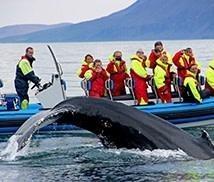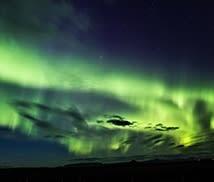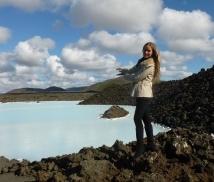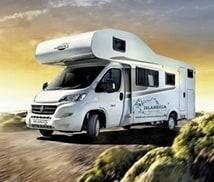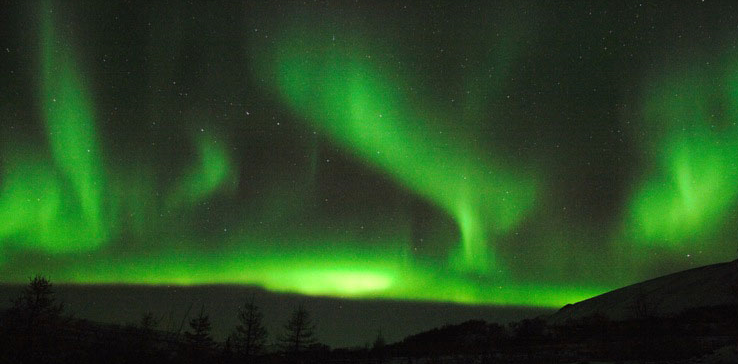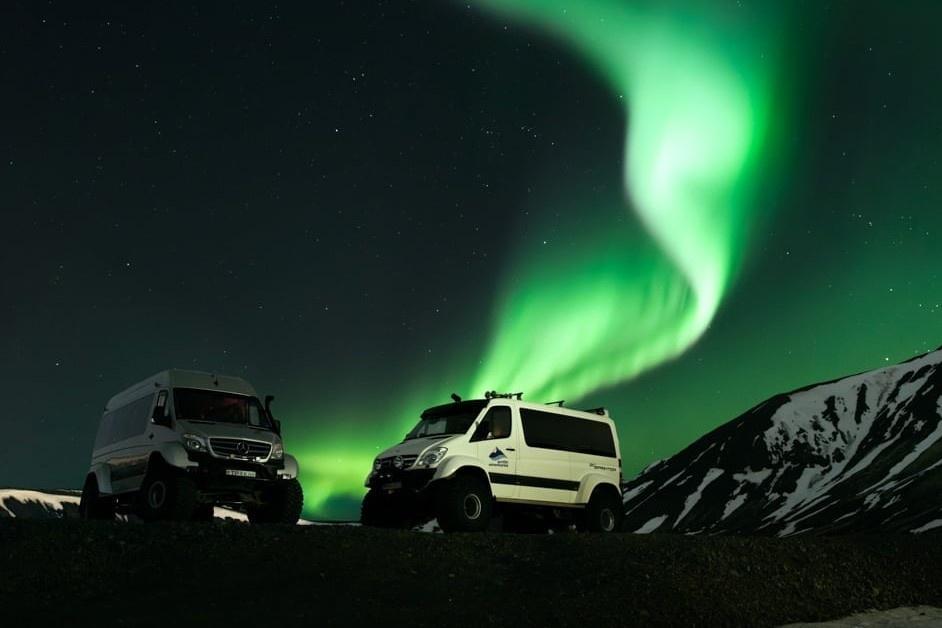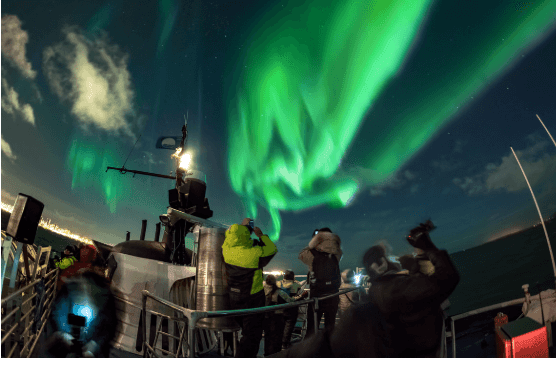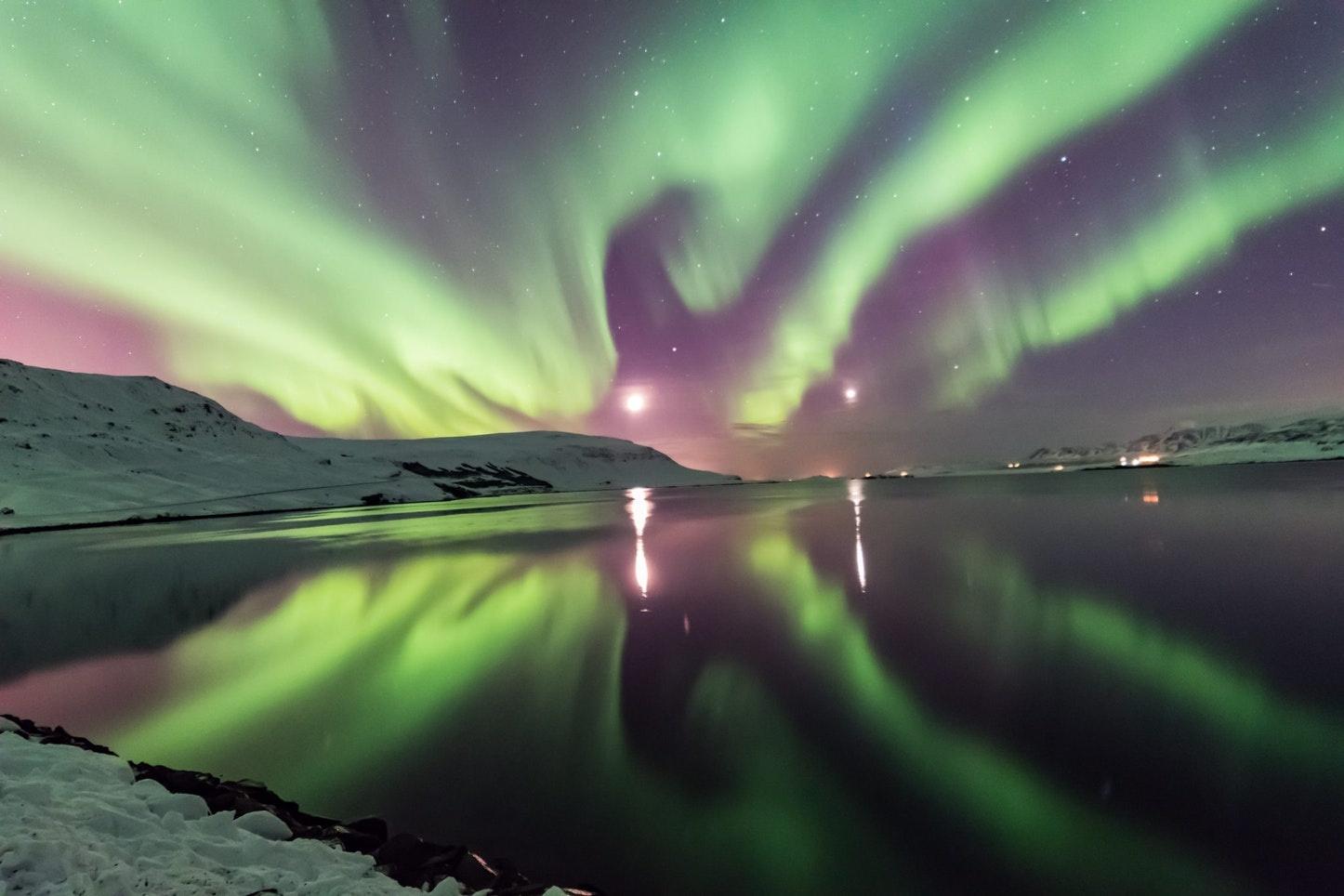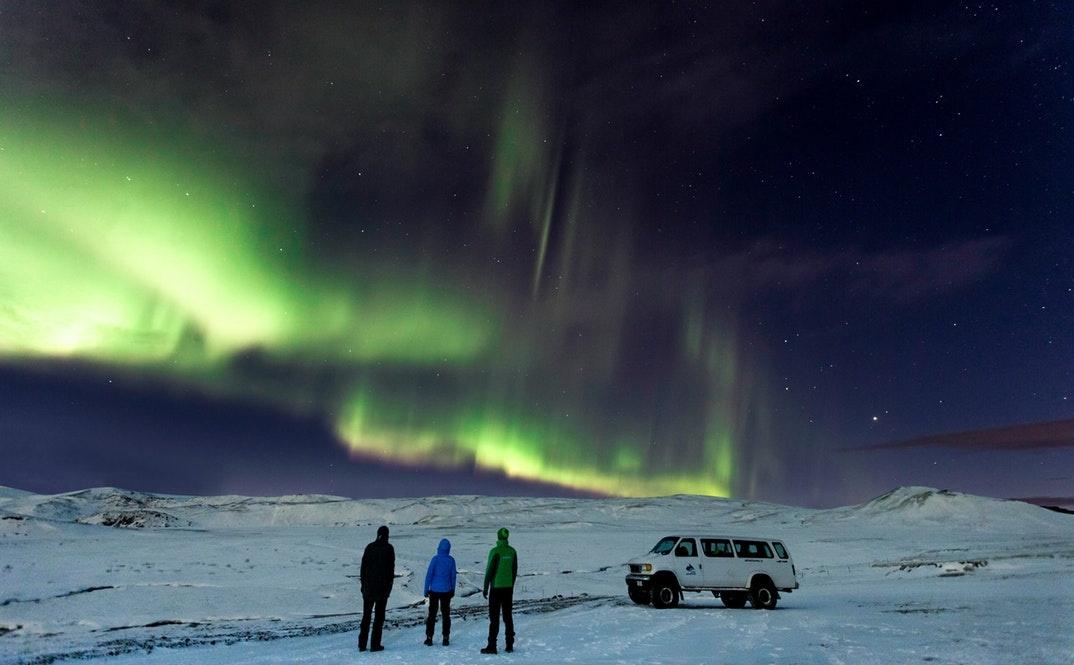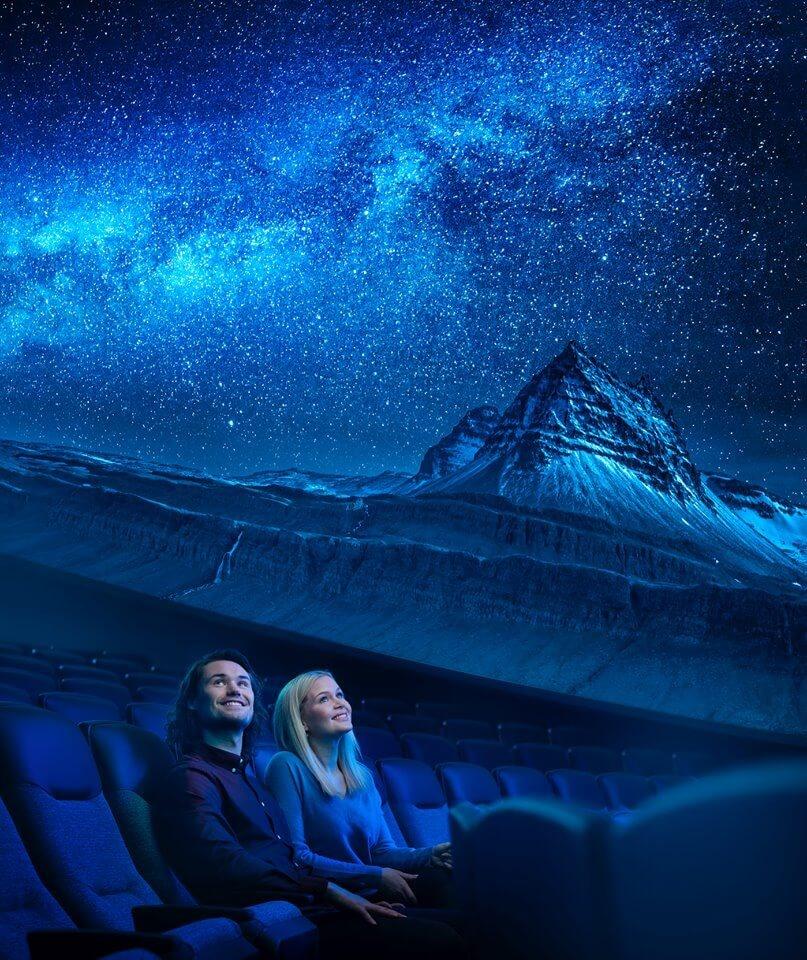NORTHERN LIGHTS IN ICELAND
Are you coming to Iceland to make your dream true and see the Northern Lights? The Northern Lights appear in Iceland from late August to mid-April, check out the best tours, read our tips for seeing the Northern Lights in Iceland below, put on your winter clothes and get ready to hunt these magical lights dancing across the Icelandic sky.
- When is the best time to see Northern Lights in Iceland?
- The Northern Lights are a unique phenomenon. You will never forget seeing these incredible lights of different colors (normally different tones of green but also occassionaly red, purple orange or even blue or pink) dancing in the sky. To catch them you have to come from late August to mid-April (better yet, come in winter months), when the Northern Lights can be seen in Iceland. Normally, the Northern Lights appear between 9:00 p.m. and 2:00 p.m. (they require darkness and partially clear skies). In our experience, it is best to hunt the Northern Lights between 10 p.m. and 1 a.m. It is true that solar activity is higher during the equinoxes, so at the end of September and during March the intensity of the Northern Lights is stronger (you might be lucky then) but you must take into account also the hours of darkness and clear skies so December, January and February are also good months to see the Northern Lights in Iceland.
To sum it up, our best advice is very simple: come to Iceland in autumn or winter and come as many days as possible. More days mean more chances to see the Northern Lights! - What is required to see the Northern Lights in Iceland?
- The Northern Lights require dark and partially clear skies, so to catch them you have to escape city lights (artificial lights can hide the Northern Lights and even natural light such as from the full moon, can make it harder to see them). Of course, you have to come to Iceland between the end of August and the beginning of April, wait for the night and try to observe them between 9 p.m. and 2 a.m. Another important factor is the solar activity, which you can check in the weather forecast here: https://en.vedur.is/weather/forecasts/aurora/
Auroras can be seen very well even when the kp is 2 out of 9 on the intensity scale (it rarely goes over 4). The higher the number, the more intense the aurora is. As you already know, you need clear skies, so you can check it out in the forecast before starting your adventure (the weather changes quickly in Iceland so you have to check it at the moment and go to the areas with clear skies). - Which tours can I join to see the Northern Lights in Iceland
- If you are don't want to rent a car in Iceland, don't worry, you can join one of our tours from Reykjavík and hunt the Northern Lights with us. Of course, you can book our classic Northern Lights tour by bus, it will bring you outside the city to the best places to see the Northern Lights (you will have an audio guide in 10 languages and an English speaking assistant guide). But we offer you many other and more interesting options, such us the Small group tour (a better experience!), the Super Jeep ride to the Northern Lights (go where the others can't go), the Northern Lights by boat tour (better to see them from the see, right?) or the Lava Cave and Northern Lights tour (earth and sky together in the perfect combo tour).
- How are the Northern Lights formed and how are the cycles?
-
The Northern Lights appear when it is quite dark and the skies are clear. An injection of solar mass collides with the Earth's magnetosphere. When colliding with this protective sphere, the solar winds move along the sphere. Thus, a lot of energy accumulates until it reaches a point where it shoots up and the radiation collides with our ionosphere. And from that, the show begins. The Northern Lights are also correlated with an 11-year cycle in sunspot activity and other perturbations of the sun. In 2013 there was the solar maximum activity. Although we are now in a decline in activity, it doesn't mean you cannot see the Northern Lights (in Iceland there is always the chance). The solar activity will be again at the maximum in 2024, so get ready.
What happens if I can't see the Northern Lights?
If you book a tour to see the Northern Lights and you are not lucky enough to see the Northern Lights, you will have a chance to do another regular tour for free any other day. That's why you should book it for the first night in Iceland, so you have as many chances as possible! It can also happen that the tour is cancelled because there are no chances of seeing Northern Lights, in that case you can also ask for a refund, so you can book the tour without worries. Unfortunately, the Northern Lights are unpredictable in advance so you will be notified about any cancellation the same day of the tour.Where are the best places to see the Northern Lights in Iceland?
If you're traveling on your own by car, the possibilities are endless in Iceland. Of course, the first thing is to get away from the urban centers and city lights and look for clear places. Although when the intensity is high, the northern lights can be seen even in the center of Reykjavík, as the Northern Lights come from the north, we recommend choosing a place facing north. From Reykjavík, it is better to go to the Golden Circle area (Gullfoss, Thingvellir National Park, or Kérid crater). And if you are already going around the island, check out some of our favorite places, such us the Skógafoss waterfall, in the south of Iceland; Jökulsárlón Glacier Lagoon, in the Vatnajökull Glacier National Park; Godafoss waterfall, in the north of Iceland; or the north of the Snaefellsnes peninsula, in the west of Iceland.Are there any trips focused on hunting the Northern Lights in Iceland ?
Of course, almost all our winter trips have been planned in order to see the Northern Lights. Check our winter trips here, and come with us to see our favorite lights dancing in the winter sky.How can I take pictures from the Northern Lights?
If you book a tour with us, don't go crazy about the pictures and live the moment. Normally, photos are taken during the tours, so you just have to check Facebook or Instagram later and get the pictures. Just live the moment! Moreover, if you are an amateur photographer and you don't have a good camera, it is not worth it. Having said so, if you are really into photography, bring a tripod, open the diaphragm, raise the ISO and vary the exposure times. Some of the guides are also photography experts, so don't hesitate and check in with them about some tips for taking good photos.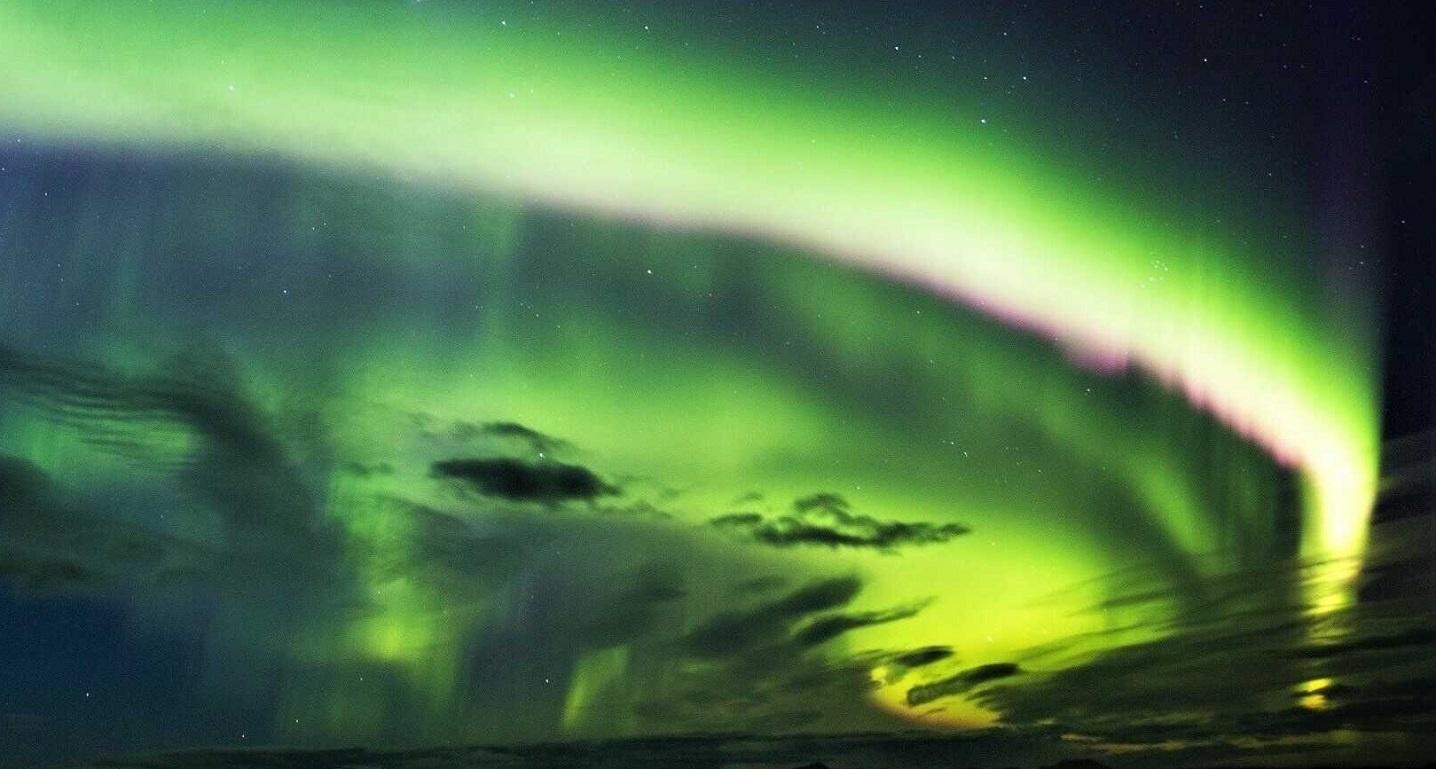
The Northern Lights, also known as the Aurora Borealis, are a natural phenomenon that occurs in high-latitude regions, including Iceland. The lights are caused by charged particles from the sun colliding with gases in the Earth's atmosphere, creating a colorful display of light in the night sky.
Iceland is one of the best places in the world to see the Northern Lights, as it's located close to the Earth's magnetic pole and has minimal light pollution. The best time to see the Northern Lights in Iceland is from September to mid-April, when the nights are long and dark.
There are several ways to experience the Northern Lights in Iceland:
-
Guided Tours: Many tour operators in Iceland offer Northern Lights tours, which take visitors to the best viewing locations outside of the city. These tours are led by experienced guides who can provide information about the lights and increase the chances of seeing them.
-
Self-Drive: Visitors can rent a car and drive out to a remote location to view the Northern Lights on their own. However, it's important to check weather and aurora forecasts, as well as road conditions, before heading out.
-
Hot Springs: Several hot springs in Iceland, such as the Blue Lagoon and the Myvatn Nature Baths, offer visitors the opportunity to soak in warm water while watching the Northern Lights dance across the sky.
It's important to keep in mind that the Northern Lights are a natural phenomenon and can be unpredictable. Even on the clearest nights, there is no guarantee that they will appear. However, with a bit of luck and patience, seeing the Northern Lights in Iceland can be a truly unforgettable experience.
See the northern lights pictures from the travellers from Iceland:
-
Important note: The Northern Lights are a natural phenomenon and cannot be guaranteed. The tours only if the weather conditions are good. The guides always evaluate the weather situation and, depending on the conditions, the departure is confirmed. Even if the excursion leaves, it is not 100% guaranteed to see the Northern Lights. If this is not possible, the provider offers the possibility of joining tour on a different date for free, in a regular group and according to availability. The tour itinerary may vary each day depending on the probability of seeing the Northern Lights. If the tour leaves and the Northern Lights are not seen during the excursion, you are not entitled to a refund since the tour was carried out. ID 827

 ES
ES  EN
EN 

